Abstract
Pulsed Doppler echocardiography was employed to detect disturbed or turbulent flow diagnostic of aortic or mitral regurgitation. Sensitivity, specificity, diagnostic accuracy, and predictive value were assessed by the independent interpretation and comparison of aortic root angiograms (91 patients) and left ventriculograms (94 patients) to the time interval histogram display of the pulsed Doppler. Sensitivity of Doppler in detecting mitral regurgitation was 94 per cent, with specificity 89 per cent, predictive value 81 per cent, and diagnostic accuracy 90 per cent (32 patients with, 62 without regurgitation). In aortic regurgitation, sensitivity was also 94 per cent, specificity 82 per cent, predictive value 94 per cent, and the diagnostic accuracy was 91 per cent (69 patients with, 22 without aortic regurgitation). Additionally, no Doppler evidence of mitral or aortic regurgitation was present in 20 normal subjects. The aetiology of left-sided valvular regurgitation varied widely, with prosthetic valvular insufficiency being the cause of mitral and aortic regurgitation in seven and 10 patients, respectively. Sixteen of 17 (94%) paraprosthetic leaks were correctly identified by pulsed Doppler. In patients with aortic regurgitation the flow-velocity curve recorded in the ascending aorta frequently showed a negative (or reversed) diastolic component, the magnitude of which (expressed as percentage negative area) correlated significantly with angiographic severity of regurgitation. Thus, pulsed Doppler echocardiography is a highly accurate and objective non-invasive technique for detecting mitral and aortic regurgitation. In aortic regurgitation, estimation of severity is possible from inspection of the Doppler ascending aortic flow velocity curve.
Full text
PDF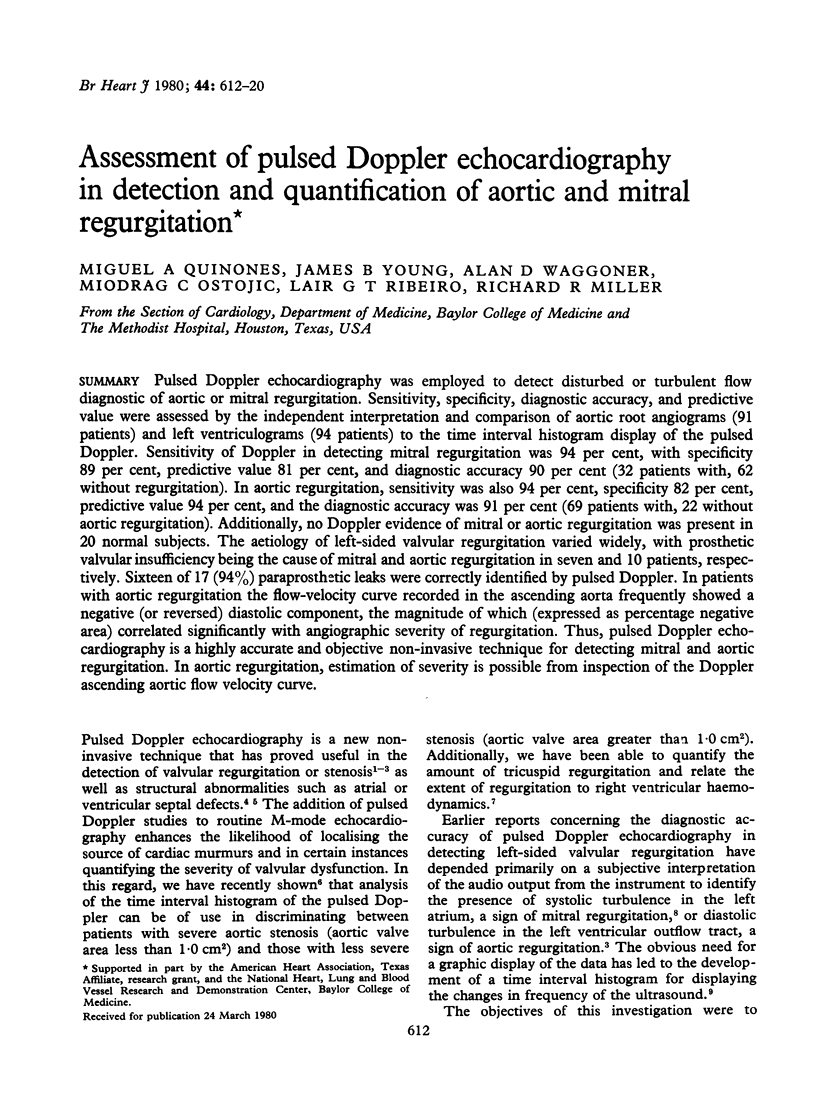
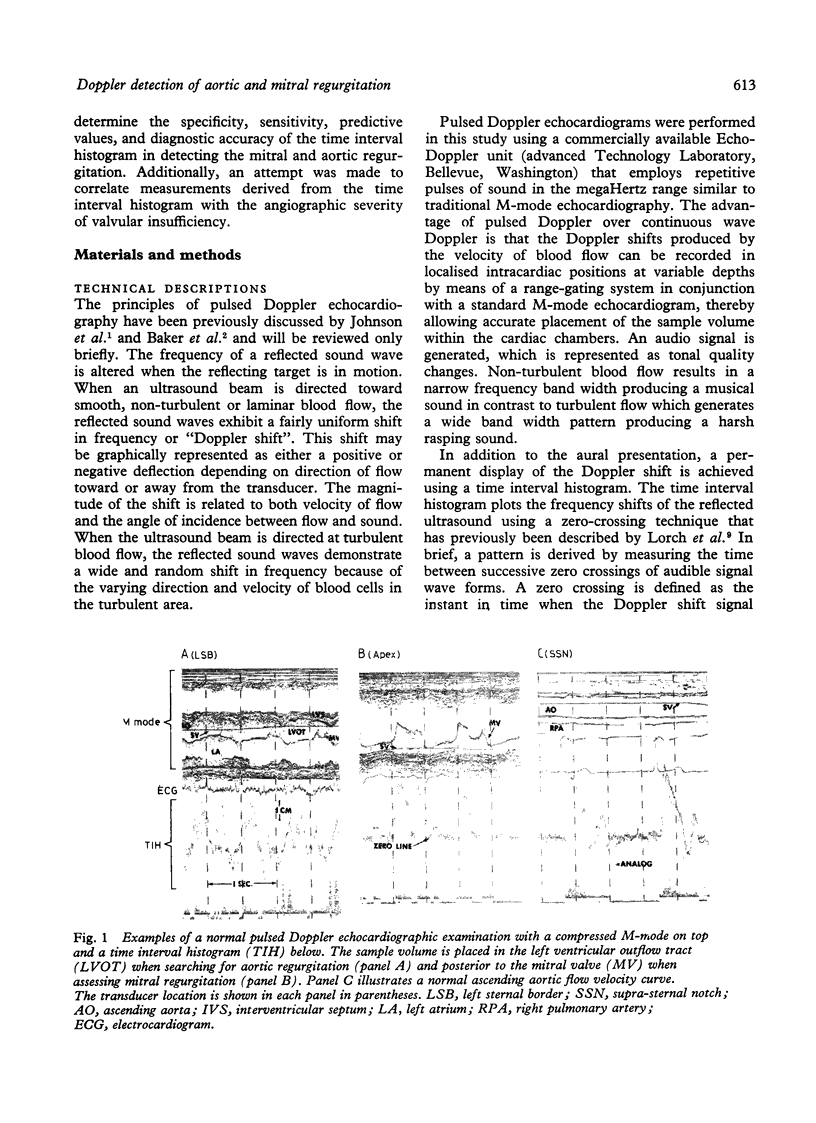
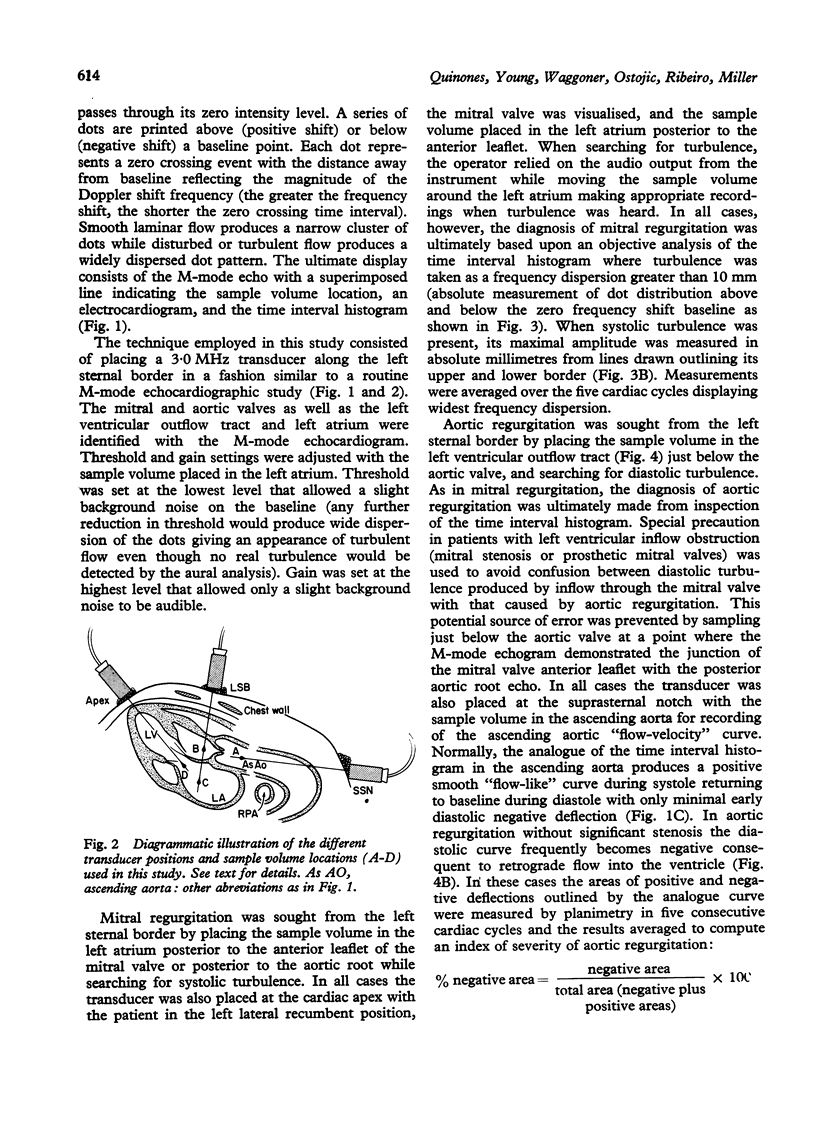
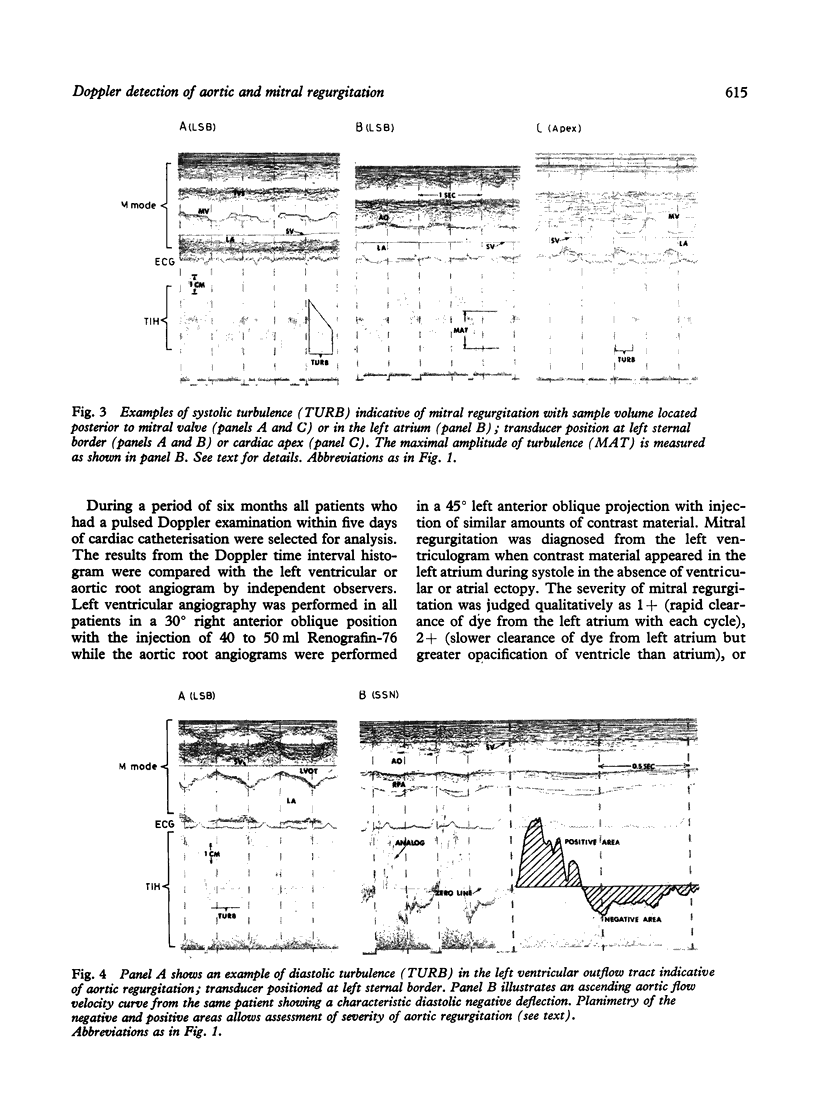
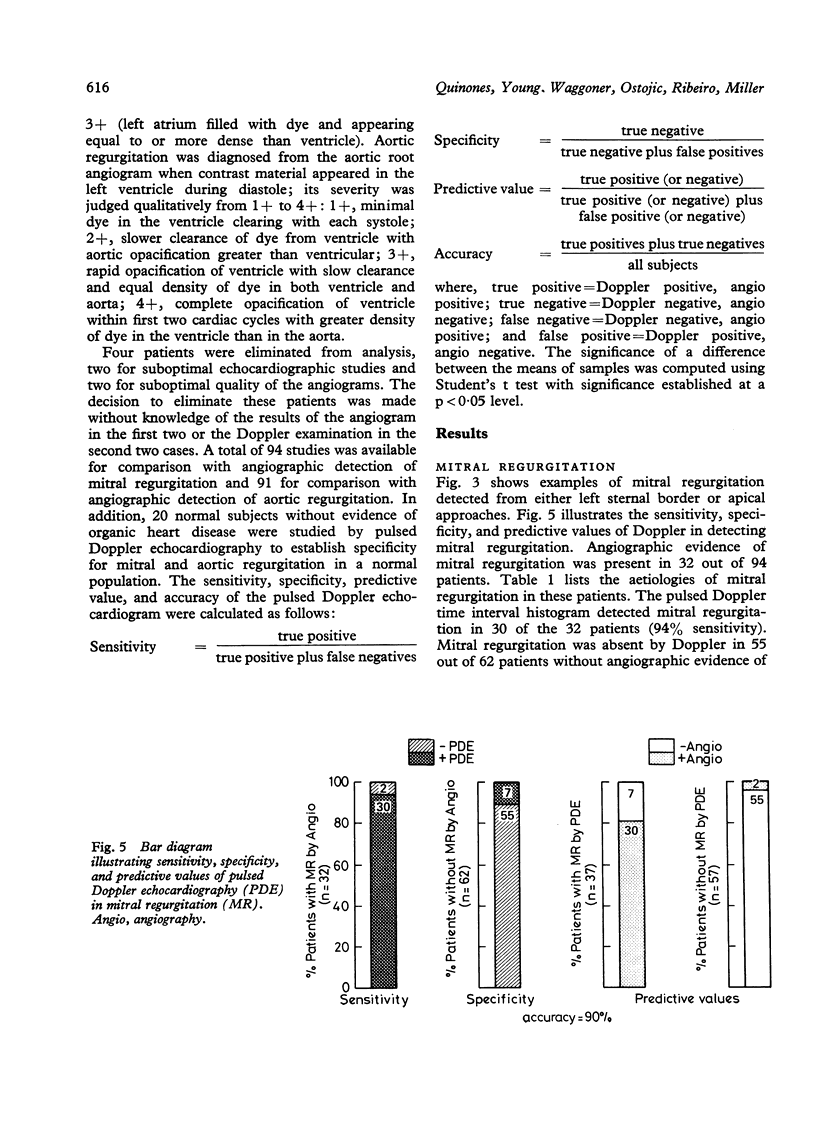


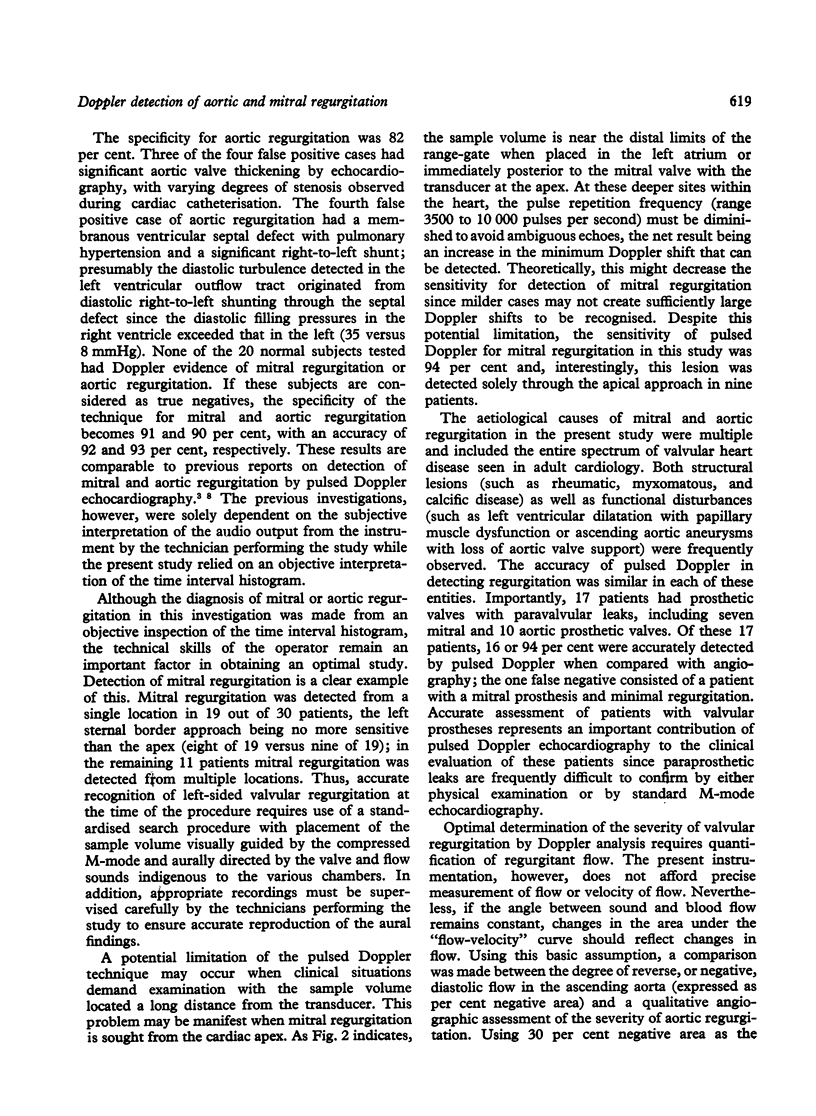
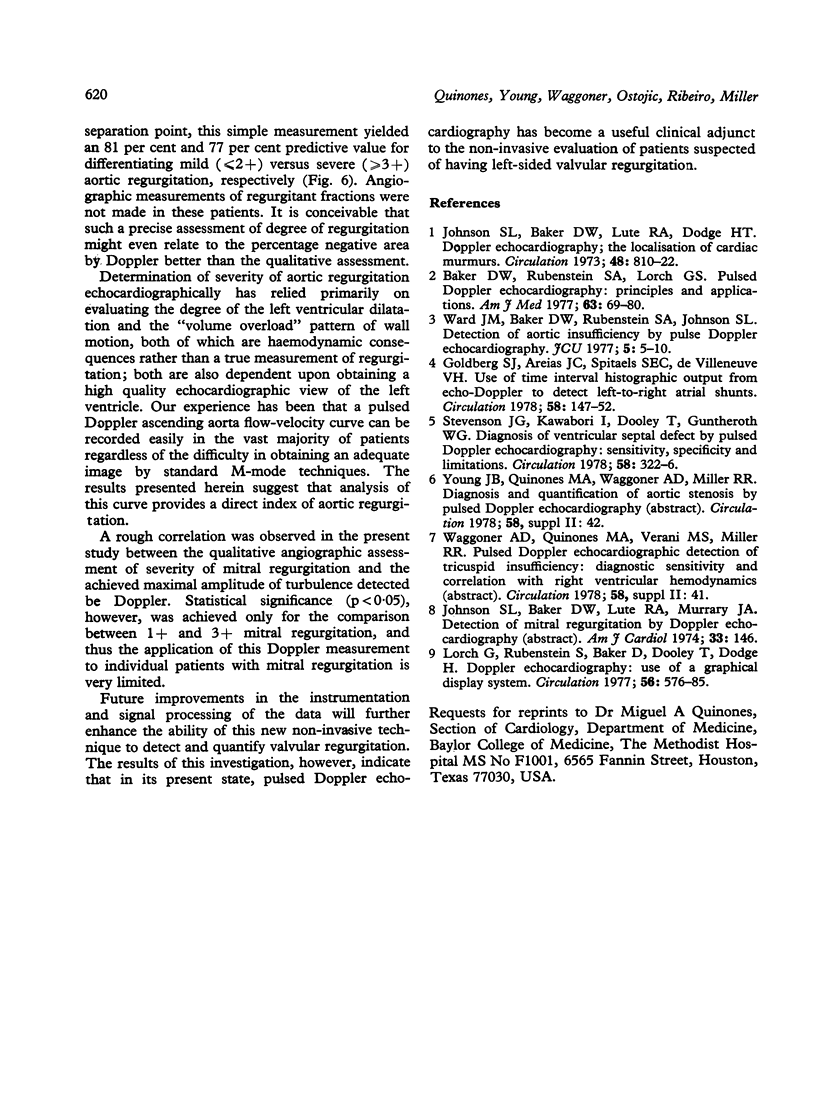
Images in this article
Selected References
These references are in PubMed. This may not be the complete list of references from this article.
- Baker D. W., Rubenstein S. A., Lorch G. S. Pulsed Doppler echocardiography: principles and applications. Am J Med. 1977 Jul;63(1):69–80. doi: 10.1016/0002-9343(77)90119-x. [DOI] [PubMed] [Google Scholar]
- Goldberg S. J., Areias J. C., Spitaels S. E., de Villeneuve V. H. Use of time interval histographic output from echo-Doppler to detect left-to-right atrial shunts. Circulation. 1978 Jul;58(1):147–152. doi: 10.1161/01.cir.58.1.147. [DOI] [PubMed] [Google Scholar]
- Johnson S. L., Baker D. W., Lute R. A., Dodge H. T. Doppler echocardiography. The localization of cardiac murmurs. Circulation. 1973 Oct;48(4):810–822. doi: 10.1161/01.cir.48.4.810. [DOI] [PubMed] [Google Scholar]
- Lorch G., Rubenstein S., Baker D., Dooley T., Dodge H. Doppler echocardiography. Use of a graphical display system. Circulation. 1977 Oct;56(4 Pt 1):576–585. doi: 10.1161/01.cir.56.4.576. [DOI] [PubMed] [Google Scholar]
- Stevenson J. G., Kawabori I., Dooley T., Guntheroth W. G. Diagnosis of ventricular septal defect by pulsed Doppler echocardiography. Sensitivity, specificity and limitations. Circulation. 1978 Aug;58(2):322–326. doi: 10.1161/01.cir.58.2.322. [DOI] [PubMed] [Google Scholar]
- Ward J. M., Baker D. W., Rubenstein S. A., Johnson S. L. Detection of aortic insufficiency by pulse Doppler echocardiography. J Clin Ultrasound. 1977 Feb;5(1):5–10. doi: 10.1002/jcu.1870050103. [DOI] [PubMed] [Google Scholar]





